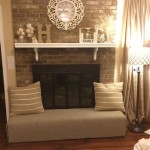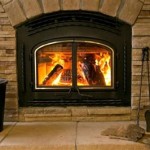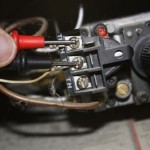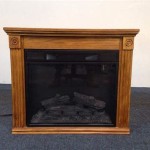Elevating Fireplace Aesthetics: The Role of Crown Molding and Mantels
Fireplaces serve as focal points within a living space, providing warmth and visual appeal. The architectural details surrounding a fireplace significantly contribute to its overall aesthetic. Crown molding and mantels are two key elements that can transform a simple fireplace into a sophisticated and elegant feature. The selection and integration of these elements require careful consideration of architectural style, material choices, and installation techniques.
This article explores the function and importance of fireplace crown molding and mantels, detailing the various types available, factors influencing their selection, and practical considerations for installation and maintenance. The goal is to provide a comprehensive understanding of how these architectural features can enhance the aesthetic value of a fireplace and the surrounding room.
Understanding Fireplace Crown Molding
Crown molding, traditionally installed where walls meet the ceiling, adds a decorative flourish to any room. When applied to a fireplace, it serves to frame the structure and create a refined transition between the firebox and the surrounding wall. The style and size of the crown molding should complement the overall design of the fireplace and the room, harmonizing with existing architectural details.
The primary function of crown molding is decorative. It adds visual interest and complexity to what might otherwise be a plain surface. The molding can create a sense of height within the room, especially when installed with a larger profile. Furthermore, it can conceal any imperfections where the fireplace surround meets the wall, providing a clean and finished look.
Materials used for fireplace crown molding vary widely and influence both the appearance and the durability of the installation. Wood, such as pine, oak, or poplar, are common choices, offering versatility in terms of paint and stain options. Polyurethane molding provides a lightweight and moisture-resistant alternative, suitable for areas prone to humidity. Medium-density fiberboard (MDF) is another cost-effective option that provides a smooth surface for painting.
Several factors contribute to the selection of appropriate crown molding for a fireplace. The architectural style of the home, whether traditional, modern, or contemporary, should guide the choice. The size of the room and the scale of the fireplace should also be considered; larger rooms can accommodate more substantial molding profiles, while smaller spaces may benefit from more delicate designs. The color and finish of the molding should coordinate with the existing décor and complement the fireplace mantel, if one is present.
Installation of crown molding typically involves precise measurements, accurate cuts, and secure attachment to the wall. The use of a miter saw is essential for creating clean and accurate angled cuts for corners. Proper adhesion, using nails, screws, or construction adhesive, ensures a lasting and secure installation. A professional installer can ensure that the crown molding is installed correctly and seamlessly integrates with the fireplace surround.
The Function and Styles of Fireplace Mantels
A fireplace mantel is a shelf or projecting structure above the firebox, offering both decorative and functional benefits. Historically, mantels served as a structural element to support the chimney breast, as well as a practical surface for displaying objects. Today, mantels continue to enhance the aesthetic appeal of a fireplace while providing a focal point for the room.
The primary functions of a fireplace mantel are both aesthetic and functional. Aesthetically, the mantel provides a visual anchor for the fireplace, drawing the eye and creating a sense of balance within the room. Functionally, the mantel provides a surface for displaying decorative items, such as photos, artwork, candles, and seasonal decorations. In some cases, mantels may also house or conceal wiring for televisions or other electronic devices.
Fireplace mantels come in a variety of styles, each offering a distinct aesthetic. Traditional mantels often feature ornate carvings, detailed moldings, and classic designs, reflecting the historical styles of the 18th and 19th centuries. Contemporary mantels tend to be more minimalist, featuring clean lines, simple shapes, and modern materials. Rustic mantels incorporate natural elements such as wood, stone, and reclaimed materials, creating a warm and inviting atmosphere. Floating mantels, a more recent trend, appear to be suspended from the wall, offering a sleek and modern look.
Materials used for fireplace mantels are diverse, each offering unique characteristics. Wood remains a popular choice, with options ranging from hardwoods like oak and walnut to softwoods like pine and cedar. Stone mantels, such as marble, granite, or limestone, offer a luxurious and durable option. Brick mantels provide a rustic and traditional look, while concrete mantels offer a modern and industrial aesthetic. Metal mantels, typically made of steel or cast iron, can add a contemporary or industrial touch.
Several factors contribute to the selection of an appropriate fireplace mantel. The architectural style of the home is a primary consideration, ensuring that the mantel complements the existing décor. The size of the fireplace and the room also influence the choice of mantel size and style. The material of the mantel should be durable and heat-resistant, especially if the fireplace is used frequently. The personal preferences of the homeowner, in terms of style, color, and design, should also be taken into account.
Installation of a fireplace mantel typically involves securing the mantel to the wall using screws, brackets, or construction adhesive. The installation process may vary depending on the type of mantel and the construction of the fireplace surround. A professional installer can ensure that the mantel is installed correctly and securely, meeting all safety codes and regulations. Clearance requirements from the firebox must be strictly adhered to, preventing potential fire hazards.
Integrating Crown Molding and Mantels for a Cohesive Design
The integration of crown molding and mantels around a fireplace requires careful planning to achieve a cohesive and aesthetically pleasing design. These elements should work together to enhance the overall appearance of the fireplace and the surrounding room. This involves considering the style, materials, and proportions of both components to create a harmonious balance.
The first step in integrating crown molding and mantels is to determine the desired style. Whether the goal is a traditional, contemporary, or rustic look, the chosen style should inform the selection of both the crown molding and the mantel. Traditional designs often pair ornate crown molding with intricately carved mantels, while contemporary designs might feature minimalist crown molding and sleek, floating mantels. Consistency with the overall architectural style of the home is essential for a cohesive design.
The materials used for crown molding and mantels should complement each other visually and texturally. For example, a wood mantel might be paired with wood crown molding in a similar finish, creating a unified look. Alternatively, contrasting materials can be used to create visual interest. A stone mantel might be paired with painted crown molding, creating a contrast of textures and colors. When selecting materials, consider the durability, heat resistance, and maintenance requirements of each option.
The proportions of the crown molding and mantel should be carefully considered in relation to the size of the fireplace and the room. A large, ornate mantel might overwhelm a small fireplace, while a delicate mantel might get lost in a large room. The scale of the crown molding should also be proportionate to the height of the walls and the size of the fireplace. Achieving a balance between these elements is crucial for a visually appealing design.
Color plays a significant role in the integration of crown molding and mantels. Matching the color of the crown molding and mantel to the surrounding walls can create a seamless and understated look. Alternatively, painting the crown molding and mantel in a contrasting color can make the fireplace a focal point of the room. The choice of color should be guided by the overall décor of the room and the desired aesthetic.
Lighting can also enhance the integration of crown molding and mantels. Installing accent lighting above the mantel can highlight decorative items and create a warm and inviting atmosphere. Recessed lighting in the ceiling can illuminate the crown molding, accentuating its design and adding dimension to the room. Proper lighting can draw attention to the architectural details of the fireplace and create a more visually appealing space.
Maintaining the crown molding and mantel ensures their longevity and aesthetic appeal. Regular cleaning, using a soft cloth and mild detergent, can remove dust and dirt. Wood mantels may require occasional polishing or refinishing to maintain their luster. Stone mantels should be sealed periodically to prevent staining. Promptly addressing any repairs, such as cracks or chips, can prevent further damage. Proper maintenance ensures that the crown molding and mantel continue to enhance the beauty of the fireplace for years to come.

Diy Mantel Update With Crown Molding Table And Hearth

Fireplace Mantels Michigan Crown Molding

Super Simple Mantel

Diy Mantel Update With Crown Molding Table And Hearth

A Realistic Fireplace Makeover Part 2 K R Adventures

Fireplace Trim Close Up Of The White Crown Molding And Shiplap Above Lake House Interior Design Farmhouse Style Lighting Fixtures

Diy Mantel Update With Crown Molding Table And Hearth

Fireplace Mantels Molding Remodel Simple

Newmouldings Fireplace Mantel

How To Build Fireplace Mantel 102 Part 5 Make The Hood Joy Of Moldings
Related Posts








